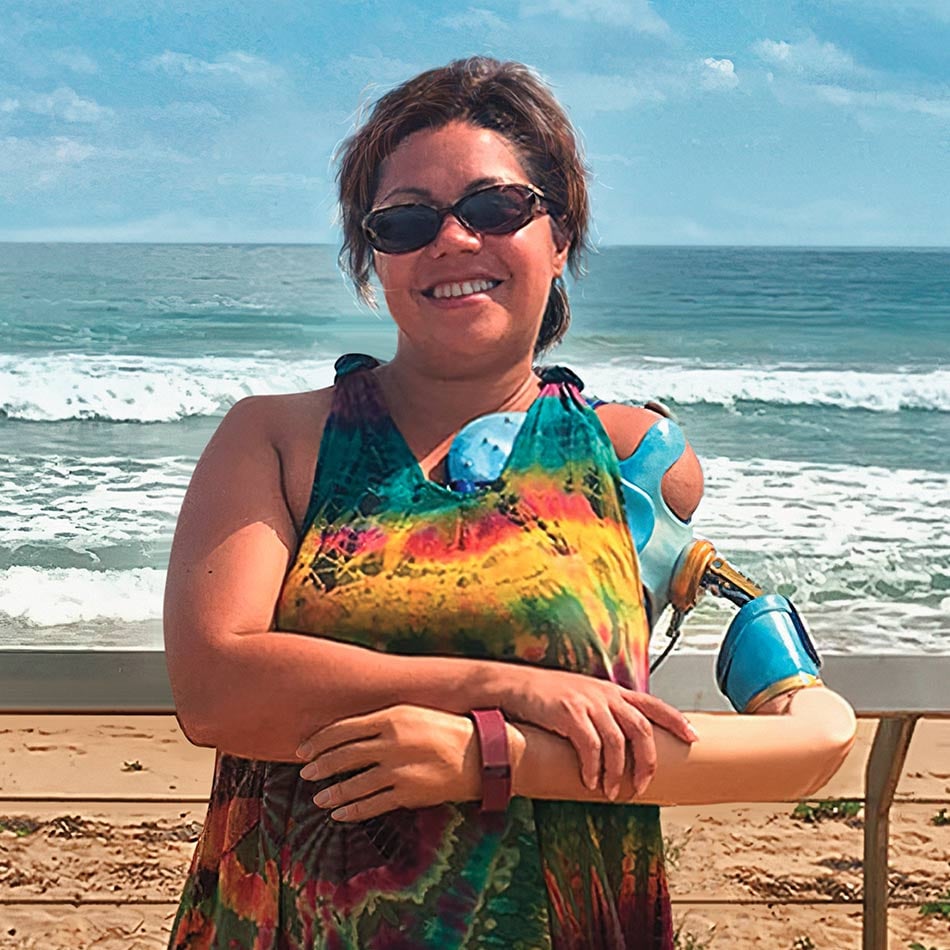All the Feels
By Claudia Mitchell
I lost my left arm just below the shoulder in a motorcycle accident.
At the time, I was just a few months removed from four years of active duty with the Marine Corps. So I still had the attitude that I could do anything. Nothing could stop me.
I’m extremely proud to be part of the research conducted by Dr. Marasco and his team.1 The technology that they’re developing is closing the gap when it comes to sensation. Before, even with a high-functioning prosthetic hand, you only knew what the hand was doing if you were looking at it. Now, you can shake somebody’s hand without looking and know that you’re not hurting them. Or you can touch a cup of coffee and know if it’s too hot. When you have sensation, you have things like pressure and temperature, which are so important to everyday function.2
The sensation work that Dr. Marasco and his team are doing isn’t just giving you back function; it’s giving you a real connection. You go from thinking “This is a machine that’s attached to me” to “This is a part of me.” That’s a really big deal as far as being able to heal and to move forward.
Claudia Mitchell is a scuba diving instructor. Being in the ocean makes her feel free and whole again.

Photo: Courtesy of Claudia Mitchell
Notes
- For more than a decade, Mitchell has participated in research trials with a multidisciplinary team led by Paul Marasco, PhD, of Cleveland Clinic’s Lerner Research Institute. They worked with specialists from Advanced Arm Dynamics to build a bionic arm for Mitchell.
- Nerves from Mitchell’s amputation site were relocated to her chest. When she thinks about moving her prosthetic hand, her chest muscles generate an electrical signal that moves the hand. Small robots sense touch from the fingers and transfer it to the nerves in her chest, which signal to her brain what her fingers feel.
Claudia Mitchell’s prosthetic arm is outfitted with a computerized robotic touch system.
